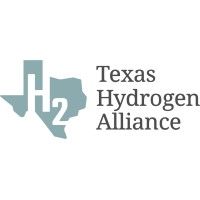Airbus manufacturers are working to remove carbon emissions from the aviation industry
)
The well-known aviation company, Airbus, has a base which is located in Bristol and their current focus is to remove carbon emissions from the aviation industry. One of the team members has described this carbon project as similar to working on Concorde, due to the similarities in difficulty and importance within the aviation industry.
Sue Partridge is one of the team members working on finding viable and effective ways of using hydrogen as a fuel source for airplanes, and she currently runs the Wing of Tomorrow programme for Airbus. Partridge compared her time working on Concorde with her current project with Airbus, identifying similarities not only with the location, but also the immensity of the project itself. Airbus’s base is in Flinton, Bristol, the same place that Concorde was built and as Partridge has worked in that part of Flinton for 34 years, she is proud to be able to say that she helped develop the commercial jet which broke the speed of sound and is now working on her largest and most difficult project yet.
Similarities between Concorde and the planes developed by Airbus today are easily seen in the huge goals the companies have set out to accomplish. It is evident from the way Concorde used 20 tons of jet fuel an hour, which is nearly four times as much as an Airbus A350, that fuelling an aircraft from hydrogen will also mean that a lot of fuel is required to make this possible. However, this is a much more beneficial approach for the aviation industry when focusing on environmental impact, as currently modern Airbus planes use 2.9 litres of fuel, which is still contributing to carbon emissions.
Therefore, due to the continuous kerosene and carbon dioxide emissions, Airbus recently announced that they will be working towards developing an aircraft with ‘near zero’ emissions. This will be made possible through two options, either the aircraft will have hydrogen burned for their fuel, or they will use fuel cells whilst onboard. The aim for the company is to have efficiently flying aircrafts fully mobile and in the air by the mid-2030s. This is an incredible aim and shows how far the aviation industry has come, from breaking the sound barrier, to hydrogen fuelled vehicles, going from increasing the size to increase the number of passengers, to finding ways to make an aircraft safe for passengers whilst also being more environmentally friendly, through the use of hydrogen.
Another aspect of the project which holds a lot of importance is finding ways to minimise fuel consumption, especially once the fuel source is switched to hydrogen. Being adapted to run efficiently on an alternative fuel source is an integral part of this project. One approach to minimising fuel usage, came from Partridge and her focus on how the wings are designed. Partridge explained, "Many people don't realise how important wing design is to saving fuel.” So, focusing on wing design to make the aircraft more aerodynamic and ensuring carbon emissions are reduced to protect the environment will be the two focuses of Airbus’ plan to make the aviation industry a hydrogen fuelled method of transportation.



)
)
)
)
)
)
)



)
)
)
)
)
)
)
)
)
)
)
)
)
)
)
)
)
)
)
)
)
)

)

)
)
)

)
)
)
)
)
)
)
)
)
)
)

)

)
)
)
)
)
)
)
)
)
)


)
)
)

)
)
)

)
)
)
)
)
